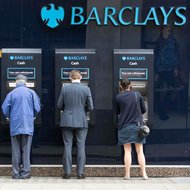The offer coincided with an extraordinary board meeting of Pescanova, called by some of its institutional shareholders. They are pushing for Pescanova’s longtime president to explain how the company ended up with accounts that do not match the debt claims filed by its creditors.
Pescanova filed for bankruptcy protection on March 1 after failing in an effort to divest some assets to help meet its debt refinancing obligations, which this year amount to about 200 million euros, or $260 million. The company then announced in a separate filing on Wednesday that it had found “discrepancies” between its accounts and its actual bank debt, a gap that “could be significant.”
Pescanova reported debt of 152 million euros, or $198 million, at the end of September 2012, which was eight times its annual operating profit.
Pescanova’s downfall provides fresh evidence that Spain’s debt crisis has stretched well beyond the banks and construction companies that have been at the heart of the country’s economic downturn. Although financial market pressure has eased on Spain, banks remain reluctant to lend to companies whose earnings have been hit by slumping consumer demand and a recession expected to last through this year.
Until recently, Pescanova was considered among Spain’s most successful food companies, with operations from Latin America to Africa. From its operational base in the northwestern port of Vigo, in the region of Galicia, it also headed an industry that remains among the country’s leading employers as well as the biggest recipient of fisheries subsidies from the European Union.
The government in Madrid has so far played down the troubles of Pescanova. After the company’s bankruptcy filing, the agriculture minister, Miguel Arias Cañete, said he was confident that Pescanova would solve what he described as a “temporary problem.”
However, Francisco Conde, the economics minister of the regional government of Galicia, underlined the extent of Pescanova’s difficulties on Thursday, telling reporters that the regional authorities now stood ready to provide “economic and institutional” help to the company once the full extent of its debt problems became clear.
The board meeting on Thursday was requested by some of the company’s main institutional investors, led by Corporación Económica Damm, which holds about 6.2 percent of the stock, and Luxempart, which has a 5.8 percent stake. Pescanova’s 45 creditors have scheduled a separate meeting on Friday to discuss how these financial institutions should act to ensure the company will eventually repay its debt.
Pescanova’s president, Manuel Fernández de Sousa-Faro, took charge in 1980 of the company, which was founded by his father two decades earlier and grew rapidly as a major player in the frozen-fish sector. Its operations now include fish factories in countries like Namibia and Honduras.
Mr. Fernández de Sousa-Faro controls about 28 percent of his company’s equity, including a stake that he bought back from NovaCaixaGalicia, the leading savings bank in Galicia. The bank was among the lenders that had to be rescued by the Spanish government because of its mountain of bad loans.
Investors have sent Pescanova’s shares tumbling 57 percent since the start of March. On Wednesday, the market regulator suspended trading in the shares.
Pescanova also breached its legal obligations to report earnings by the end of February. The market regulator said it would investigate that breach, as well as the latest accounting discrepancies, along with possible insider trading.
Article source: http://www.nytimes.com/2013/03/15/business/global/galicia-ready-to-aid-ailing-spanish-fishing-firm.html?partner=rss&emc=rss


